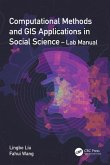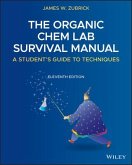Botany: A Lab Manual, Seventh Edition is mapped to match Botany: An Introduction to Plant Biology, Seventh Edition but is the perfect companion for any botany course. Packed with hands-on activities, it engages students and broadens their understanding of plant biology. Now in full color and a convenient lay-flat format, it provides detailed examination of plant structure, plant groups, genetics, classification, and more. Featuring additional case studies and image labeling activities, Botany: A Lab Manual is the clear choice for students digging into this exciting science.








